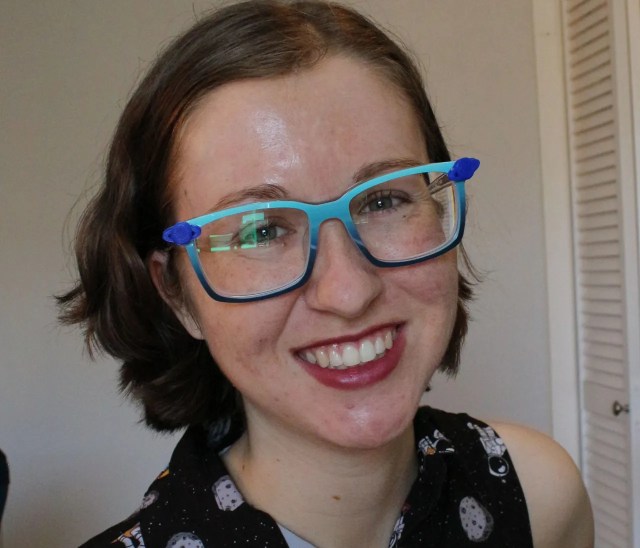https://makezine.com/2022/05/12/erin-winicks-clever-customizeable-glasses-are-out-of-this-world/
Science writer and creative maker Erin Winick has come up with a simple yet fantastic project for some customizable glasses.
Like most great ideas, hers started small. She realized that she could make accessories to fit the existing magnets on her Pair Eyewear. Having a 3D printer and easy access to tiny magnets via amazon, she got to work and came up with these delightful little 3D printed Saturns that she can pop on when the perfect moment presents itself.
Before I carry on, I must insist that you indulge in a bit of satisfying magnetic click appreciation.
Ok, now that the click enjoyment is out of the way, let’s carry on. Winick got plenty of feedback on twitter. Many of those folks were saying that she had to go bigger.
Taking their advice, she found this masquerade ball mask on thingiverse and adjusted things a bit to get them to fit her glasses.

She points out that these don’t interfere with the proper functioning of the existing customizable glasses, which is great. While tiny decorations are ultimately what I’d end up using these for most of the time, I can’t help but start to brainstorm more things she could make attach magnetically. How about a jeweler’s loupe? Maybe a tiny headlight? The possibilities are endless.
via MAKE https://makezine.com
May 12, 2022 at 10:01AM
